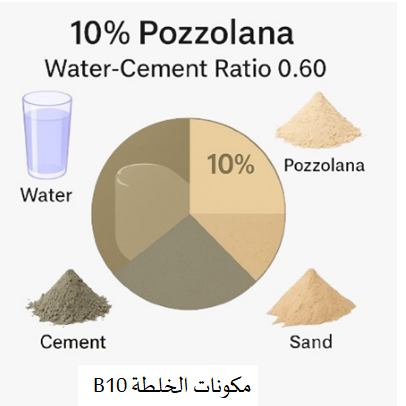Effect of Mixing Ratios Using Local Pozzolana as a Partial Cement Replacement on Plastic Cracking in Cement Mortar
DOI:
https://doi.org/10.63318/waujpasv3i2_10Keywords:
Plastic shrinkage, Pozzolana, water-cement ratio, cracking, hot weatherAbstract
Premature cracking during the plasticization stage is an undesirable phenomenon in concrete, causing subsequent problems in the durability and structural performance of structures. The term "plastic shrinkage cracking" is used to describe cracks that form in concrete between the moment of pouring and the moment of setting. The objective of this research is to investigate the effect of different mixing ratios and the use of pozzolana as a partial cement replacement, in addition to the effect of water-to-cement ratios on the formation of plastic shrinkage cracks, particularly in hot and dry environments with high evaporation rates. Experiments were conducted on cement mortar mixes with water-to-cement ratios of 0.45, 0.60, and 0.80, and with pozzolana replacement ratios of 0%, 10%, 20%, and 30%. The results showed that increasing the water-to-cement ratio significantly increased plastic shrinkage cracking, especially in reference plots, while adding pozzolana at a rate of 10% helped reduce cracking and improve the cohesion of the mixture. As the pozzolana ratio increased to 20% and 30%, a slight increase in cracking was observed, indicating that higher than the ideal ratio may lead to adverse results. The study recommends using 15% pozzolana as a partial cement replacement to achieve the best balance between reducing cracking and improving concrete performance in harsh environmental conditions.
Downloads

Downloads
Published
Issue
Section
License

This work is licensed under a Creative Commons Attribution-NonCommercial 4.0 International License.
This journal uses Creative Commons Attribution-Noncommerical 4.0 International License (CC BY-NC 4.0), which permits use, sharing, adaptation, distribution and reproduction in any medium or format, as long as you give appropriate credit to the original author(s) and the source, provide a link to the Creative Commons license, and indicate if changes were made. To view a copy of this license, visit https://creativecommons.org/licenses/by-nc/4.0/.
Copyright of articles
Authors retain copyright of their articles published in this journal.




